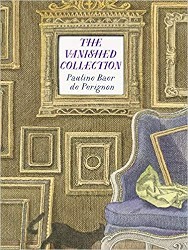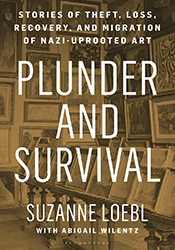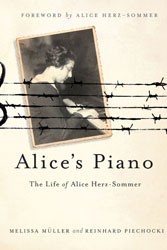Limiting her focus to three major Holocaust Memorial Museums — Yad Vashem, The Jewish Museum in Berlin, and the United States Holocaust Memorial Museum in Washington — the author describes and analyzes each in terms of its mission, architecture, and exhibits and then compares and contrasts them with one another on those terms. This is no small task and Hansen-Glucklich takes additional effort to document her statements with quotations from philosophers and scholars of the Holocaust and critical writings on Holocaust studies.
The architect Daniel Liebeskind’s extension to the Jewish Museum in Berlin had the purpose of connecting the destroyed past to the present on the very land where the destruction began. Its symbolism, often abstract (“The Architecture of Absence”), is meant to convey to the visitor the sense of that destruction and the disappearance of a rich Jewish culture that can never be recovered. The author elaborates on the theories of “Deconstructivist” architecture and concludes that Liebeskind’s building “expresses the trauma of the Holocaust — a trauma made visible through the series of voids throughout the museum.“ She contrasts that with Yad Vashem “where a positive, even redemptive narrative and sense of the sacred prevails.”
Moshe Safdie’s redesign of Yad VaShem to include the Holocaust History Museum and the Children’s Memorial and Memorial to the Deportees all have what Hansen-Glucklich notes is a “near-organic relationship to the landscape.“ Dedicated in 2005, the new addition is four times the size of the original 1957 Yad Vashem. Conceived as a repository of memory and an archive, it functions today as “playing a critical role in the Israeli civil religion.” Much of Safdie’s architectural design and installations are meant to evoke the sense of return after exile — to realize forcefully the homecoming to Zion/Israel.
Opened in 1993, the U.S. Holocaust Memorial Museum is candidly representational. According to one architecture critic, James Ingo Freed chose to make the “container one with the contained.” Noting that Freed grew up in Germany, the author claims that the images and materials utilized are Freed’s way to create a building that induces feelings of discomfort and unease.
The design of the USHMM was severely critiqued by many as being too close to a “theme park.” (Museum culture is particularly wary of being accused of Disney-like displays.) The author is critical of the massive quantity of collected “authentic” objects, claiming the exhibition shows “too much, and ends up silencing the elegiac tone one expects and hopes for in a Holocaust museum.”
The role of artifacts in Holocaust memorial museums as well as the museum as a destination point of a pilgrimage are two important aspects of the author’s views on the museums’ taking on a quasi-sacred identity.
Hansen-Glucklich teaches German language and literature at the University of Mary Washington in Virginia. Her extensive research into the subject is impressive and her conclusions on the effectiveness of the museums are deliberately ambiguous. She cautions the reader that the narratives in the museums do not necessarily reflect the range of attitudes or views of the Holocaust in Germany, Israel, or the United States. This work is a notable addition to the literature on Holocaust memorials (most of which were published in the last century), but is too scholarly to be readily accessible to the non-academic who visits the museums and could benefit from her analyses. Being familiar with the three museums, I found the book thought-provoking and insightful. Illustrations, notes, bibliography, index.
Related content:




